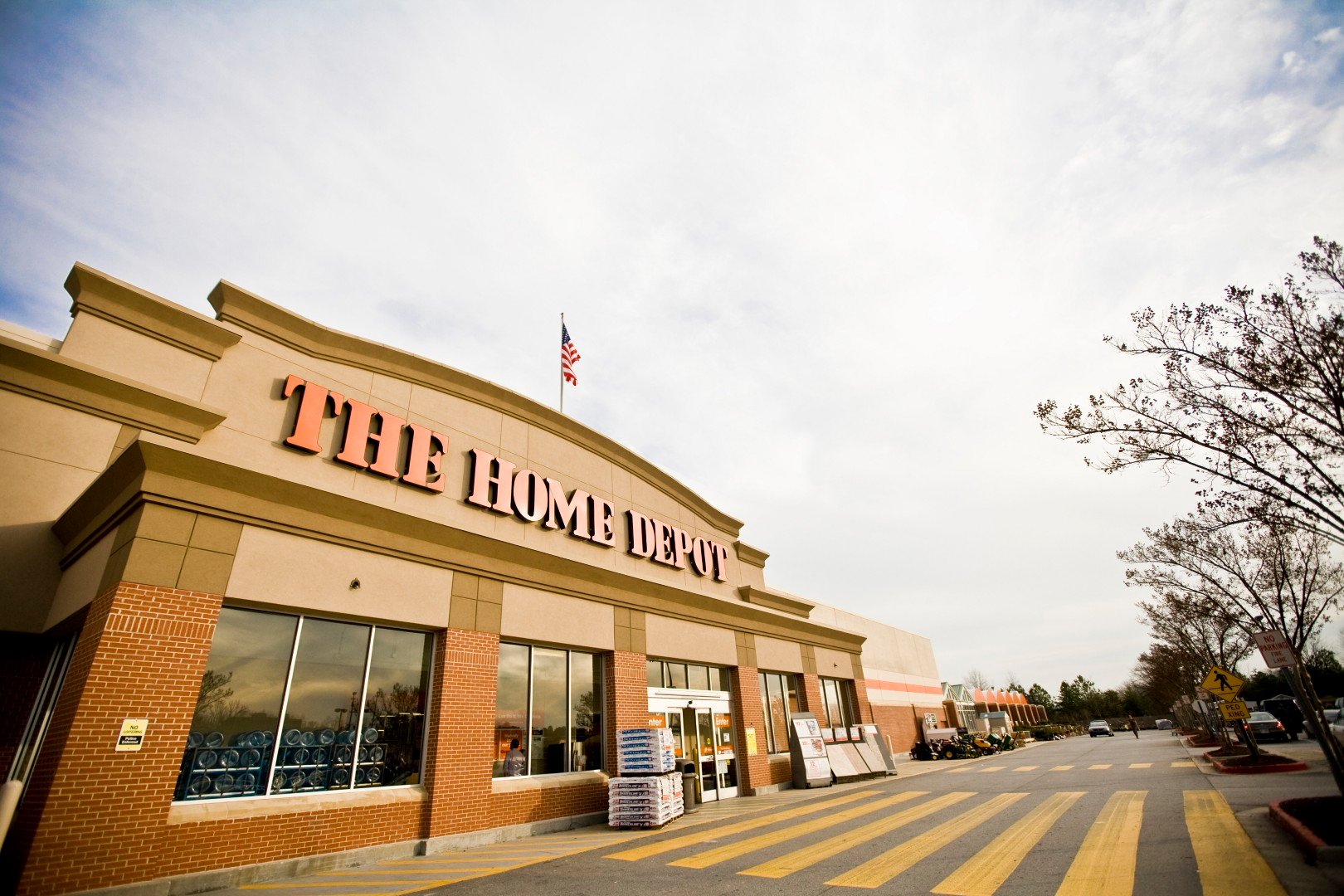Home Depot (HD +0.39%) and Target (TGT +1.54%) have been thriving despite numerous retail store closures over the past several years. These two well-known brick-and-mortar retailers have been able to drive top-line growth and deliver market-beating stock returns and growing dividends to shareholders. But which is the better choice to add to your portfolio today?
Growth
Although sales through the companies' e-commerce websites are a source of growth, each is still heavily dependent on brick-and-mortar stores for the bulk of its revenue. For Target, it's added only 4% to its store base (63 stores) since 2014 to reach 1,862 today. Same-store sales growth has been tepid for the last five years, hovering in the low single digits with a high point in 2018 with full-year comps coming in at 5%. Current same-store sales aren't much better -- for the first nine months of 2019, they were 4.2%. Revenue per square foot (reported annually) was $314 for full-year 2018, only 4% higher than it was four years earlier.

Image source: Getty Images.
The story for Home Depot is different. The company has added only 21 stores (a mere 0.9%) since the end of 2014 for a total of 2,290 locations. But what the company has done with its square footage is impressive. Same-store sales numbers have been in excess of 5% annually, and the company has increased its revenue per square foot almost 28%, to $449 in the most recent quarter from $352 at the end of 2014. Home Depot's focus on its professional customers and its investments in omnichannel capabilities have helped drive more growth for the company over the last five years.
HD Revenue (TTM) data by YCharts.
Target is investing in e-commerce and working to make its stores capable to fulfill online orders, but with less than 7% of its revenue through digital channels, it will take time for these efforts to make a material difference in the top line.
Winner: Home Depot
Value
Both stocks have beaten the S&P 500 over the last five years, but Home Depot has had better growth, so it's valued higher by the market.
|
Company |
P/S Ratio |
Trailing P/E Ratio |
Forward P/E Ratio |
|---|---|---|---|
|
Home Depot |
2.2 |
22.2 |
20.4 |
|
Target |
0.8 |
20.6 |
18.7 |
Data source: Yahoo! Finance, as of Nov. 20, 2019.
Even though the price-to-earnings ratios are not far apart today, the last three years Target has always sported lower numbers. Looking at the large disparity in the price-to-sales ratio, Target seems like a better overall value right now. If it can improve its store-level revenue numbers by executing on its e-commerce strategy, it could see better growth in its stock.
Winner: Target
Income
Target has paid a dividend every quarter since it went public in 1967. Given that track record, you might think this one is a slam dunk for the red-circle company. But let's not declare the winner just yet without looking at recent history to see how shareholders have been treated.
HD Dividend data by YCharts.
Target's dividend growth over the last five years pales in comparison to the home-improvement giant. Both have comparable dividend yields at around 2.3%, so Home Depot, with its faster-growing dividend and a strategy of paying out 55% of its prior-year earnings to shareholders, gets the nod.
Winner: Home Depot
And the winner is...
Although it seems more expensive from a valuation perspective, Home Depot deserves the premium. It has much better sales-per-square-foot stats, more top-line growth, and a steady stream of professional contractors to help bolster its brick-and-mortar traffic. Home Depot is likely a better place to invest your hard-earned money today.









